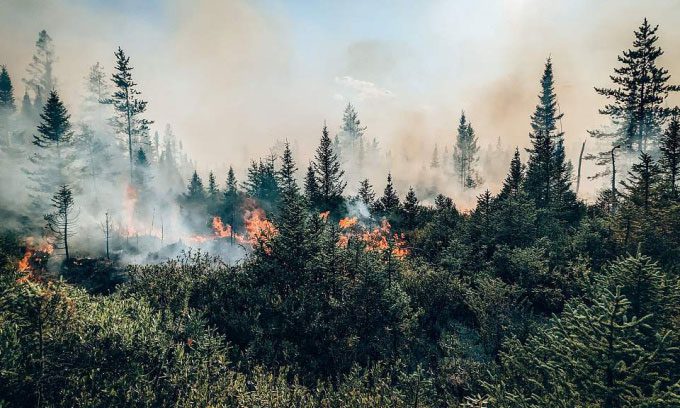Wildfires, intensified by global warming, have wreaked havoc across Canada, setting a record by emitting over one billion tons of CO2 as of July.
“Greenhouse gases such as CO2, methane, and nitrogen oxides produced from wildfires in Canada have an undeniable impact on global warming,” reported CGTN on July 28, quoting Liu Zhihua, a researcher at the Institute of Applied Ecology under the Chinese Academy of Sciences (CAS).

Wildfires in Quebec, Canada on July 21, 2023. (Photo: CFP).
Liu utilized scientific models along with remote sensing data to study and analyze greenhouse gases from burned forests. According to him, remote sensing technology is currently an effective way to estimate carbon emissions from large-scale wildfires.
The greenhouse effect caused by methane and nitrogen oxides from Canadian wildfires is equivalent to 110 million tons of CO2. Meanwhile, the CO2 emissions alone from this event have reached one billion tons. In total, over 1.1 billion tons of CO2 emissions have been generated from wildfires so far, doubling the total CO2 emissions related to energy in Canada in 2021.
As of July 27, 2023, firefighters have battled 4,818 wildfires, with a total burned area exceeding 12.2 million hectares, according to the Canadian Interagency Forest Fire Centre (CIFFC).
Air pollutants such as PM2.5, PM10, aerosols, and soot from Canadian wildfires are not stationary. For instance, the movement of these pollutants has led to the worst air quality in New York City since 1960, exceeding the air quality index standards in Chicago by 5.6 times on June 27.
These pollutants have traveled beyond the borders due to westerly winds and weather dynamics, according to Wang Zhe, an expert at the Institute of Atmospheric Physics under CAS, who is involved in the research project with Liu. They reached the Scandinavian Peninsula on May 25, spread to Iceland and Greenland on June 8, and entered mainland Europe on June 26. They have also reached North Africa and Asia, Wang noted.
“The wildfires in Canada are truly a global environmental event. And since it is still ongoing, the final impact will certainly be much more severe than the current data suggests,” Wang stated.



















































